 14/21
14/21Table of Contents [Show]
Caveblazers Review
June 3rd, 2020
Caveblazers may not have the personality or the character of the iconic cave-dwelling Roguelite Spelunky, but it is everything it should have been and more. In particular, one determinant aspect helps differentiate it from other titles in this genre: a good combat system that doesn't rely on upgrades in order to make characters effective and fun to use.
Whereas normally your starter weapon would be dropped in favor of pretty much anything, the sword and bow you employ in Caveblazers are made reliable from the get go. You are able to attack in quick succession 3 times, with the last hit dealing more damage. Each of the attacks swings at a slightly different angle - the first strikes horizontally, the second slightly arcs upwards allowing to hit enemies above, and the third (Heavy) slightly arcs downwards.

Hitting enemies thus requires precision and deliberation on the player's part. You can stop the combo at any time, or intentionally swing upwards or thrust your sword downwards in mid-air by combining the attack with directional input. The latter is a slow move that in turn has a slightly longer recovery rate. Failing to retreat after a miss may see the player punished.
These add an aspect of decision-making to the combat, providing an alternative to mindlessly mashing attack buttons, as is usually done in other Roguelites. Perhaps the best aspect of combat is just how swift and fluent the moves are. The character recovers and retaliates incredibly fast, and is never forced to stay in place while using melee or ranged weaponry. This enables them to transition from ground to air combat and switch between attack patterns in a rapid, successive fashion.
The way ranged weaponry incorporates into the system further improves the flow of combat. Bows are used with a single press of a button; they're restricted to an 8-directional grid, but firing them is otherwise seamless as you input a direction key, and the character briefly takes a bow out to nock, draw and release an arrow. You're not required to equip and hold one in order to use it, which feels like a good decision on the developer's part. This in turn allows you to mix-and-match ranged and melee moves near instantly.
Ranged weapons are also extremely reliable. They shoot quickly and are fairly accurate at that. Enemy hitboxes, while small, are not at all difficult to connect with; the 8-directional input takes very little of getting used to before you are able to effortlessly take down flying enemies and other small critters. The movement just feels tight - the characters come to a stop, turn around, jump and attack without delay, making platforming the stages while killing enemies effortless - something you will be required to do quite often during the run.
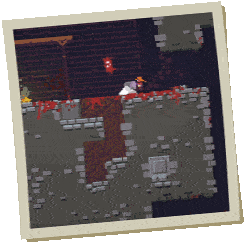
The level generator and AI make full use of this system. They often have you jump and move around as you fend off enemies and try to reach loot or the stage exit. They also employ many of the same moves you use against you, but more on that later. Mindlessly dropping off platforms may lead into deadly traps or large groups of enemies, which forces players to consider their options carefully, and puts their skills and abilities to the test.
The weapon selection in Caveblazers features great variety, which is always a plus. The starter weapons are relatively good at what they do, but can be upgraded to faster, stronger or simply different weapon variants that have various unique properties to offer. Said properties include dealing poison or fire damage, draining life, applying stun or slow effects, creating explosives or raining fire upon enemies, the ability to be combo'd with other moves for special effects, and more.
It's great that melee weapons are not all swords. A Battleaxe will have better stats but in exchange use Heavy moves exclusively. A Whip or a Polearm will have better reach but disable downward stabs, taking away from your engagement options. Maces and Staves will be more powerful, but will swing slower. Swords also swing at different rates, deal different types of damage, and apply different effects. These force you to adapt your playstyle to your gear as you progress through the game, which is something I quite enjoy.
The ranged weapon department also received lots of care and dedication. Bows can vary in shot arrow distance, velocity, and type. Most apply unique effects - allowing them to slow or suspend enemies in the air, home in on targets, explode on contact, mark enemies for critical hits, heal you while sapping away enemy health etc. Some bows fire double or triple the projectiles. Some shoot in a straight line instead of a curve, making them easier to handle.
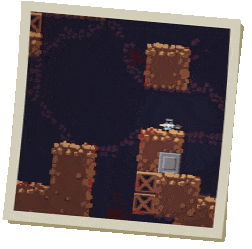
Ranged weapons don't necessarily have to be bows. They can be a sling that shoots explosive marbles, a plant that sticks to enemies, darts that can gradually be upgraded through respective altars, or antique guns that slow you down and knock you back whenever you fire them.
Not only are all of these highly creative and unique in terms of damage, firerate, and special abilities, they don't make the starters pale in comparison; some are much weaker, slower, don't reach as far, apply negative effects (like the Butcher or Crystal swords that make you more vulnerable), or disable some moves when used, forcing you to consider which stats or qualities matter more to you.
These weapons can be further upgraded at specific altars to improve their stats and damage, as well as potentially remove inherent drawbacks. This system compensates for suboptimal item drops, that way you don't feel screwed by having the same weak weapon drop for you multiple times in a row - as two have to be combined to merge into a stronger variant. Rings and Actives can also combined at said altars for an objectively stronger item. This may open up new possibilities for you that you may have not considered at first.
The central upgrade system in the game is called "Blessings". Multiple Blessings spawn on each floor and can often be picked from a selection as desired. The same Blessing can be taken twice - once for a unique effect and twice for another upgrade that makes the effect more beneficial. This is a point in favor of the system - worse Blessings can still be good if you happen to have them spawn for you more than once.
The Blessing selection itself is a mixed bag. Some Blessings are flat out boring - +1 or +2 to some such stat, an effect that can be achieved with the same ring counterpart. They can even provide a worse statline to rings; Kings' Blessing, Archer's Blessing, Dexterity Blessing, Sorcerer's Blessing, Endurance Blessing, Luck Blessing. They don't feel like they belong in the Blessing pool, and are somewhat disappointing to encounter.
On the other hand, some Blessings, ones that don't even necessarily contribute to your statline, are really quite fun to use. Among the effects of these Blessings are double-jumping, gaining health from spike traps, homing, piercing, gliding or bouncy arrows, gaining shields and health when killing enemies, more ring or magic item slots, gaining items or effects that make upgrading weapons easier, and more. Some of them are highly useful and make your character directly more powerful, thus making reaching the later stages easier.
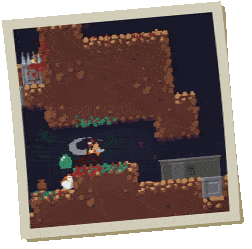
I do want to point out that many of the Blessings seem to have been inspired by other games in the genre, and some, like the Bohlt, Thorns or Horseshoe Blessing even have their use effects taken straight from games like Risk of Rain. The same can be said about Magic items. Still, the majority of the Blessings feel balanced and complement most character setups nicely, especially when upgraded, which I highly appreciate.
Perks, on the other hand, lean mostly towards the negligible stat upgrade side. They are classes meant to help you choose a character alignment, buffing specific stats like Magic, Ranged or Melee damage. That said, they're usually inferior to rings and weapons in every possible respect. They can grant you different starter items and attributes, but in exchange disable certain moves or features, which can sometimes be detrimental to your playthrough.
Most Perks I felt were either way too gimmicky to use - like Vampire that has you bleeding health but restoring it with kills, or Traditionalist which disables all Magic items - or too negligible in terms of buffing stats - like Archer, Sorcerer, Elementalist, Protection etc. They're not bafflingly bad, but they don't serve any real purpose either.
Caveblazers features a set of (secret) unlockable Relics that allow you to enable special properties in each run corresponding to the Relic(s) used; double damage to and from all sources, stronger bosses but better loot, item shops in each area at the expense of lesser item drops throughout the stage, and Shadow weapons and loot spawning alongside stronger shadow enemies. All of the above allow for greater flexibility in playstyle and give you a new perspective on many features you would otherwise not have seen without them.
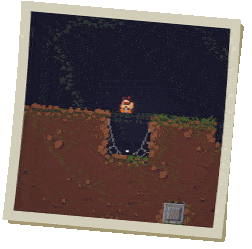
The only Relic I actively dislike is Twilight, which puts a time constraint on each stage but gives nothing in return for doing so. Unfortunately, you can only access the last secret area by using all Relics at once, so that has to justify running it; otherwise I would have preferred it not be included in the game.
The attention to detail in Caveblazers is astounding. The ground tiles are built from asymmetrical patches and mounds of dirt or brick, and characters create dust clouds as they jog on them; their sprite visibly stretches and condenses when executing certain moves to show there is impact and weight behind them. Crates and pots splinter or shatter into shards, tiny gold nuggets and gems flying out of them in every direction.
Explosions create hectic shock waves and rain dirt particles from the tiles they destroyed. Characters get visibly bloodier as they run out of health, and bleed all over the floor and walls as their bodies ragdoll across the stage. Arrows get stuck in creatures and their sprite changes based on the projectile the bow happens to be firing.
The game also shows damage numbers above the characters' heads whenever they sustain it, and gold pickup text accumulates over time as you pick up gems and nuggets in rapid succession. This goes to show just how dedicated the dev is to the visual appeal of their game and how much care they put into the smaller details in it, something everyone should value.
AI opponents in Caveblazers are surprisingly capable. Humanoid enemies chase after players and use various tools at their disposal to eliminate them, including melee weapons, ranged weapons, and shields (that players cannot use unfortunately). They are often just as mobile as the player, wall-jumping around the stage and stealing items that then drop as loot when they are killed.
Phantoms, spawned when the Oblivion Relic is in use, can even thrust their sword downwards in mid-air in a similar fashion to the PC. Enemies easily pathfind their way around the stage and try to predict where the player will move next, swinging at them before they enter melee range, forcing them to parry; alternatively, they fire arrows at them from afar, before moving in for the kill, just like a real player would.
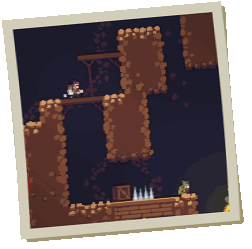
If not engaged in combat, enemies huddle around campfires inside makeshift wooden shacks sprinkled around the stage. Players may sometimes be able to sneak up on them without alerting them, then kill them before they manage to react. With that said, I was not able to figure out under which exact circumstances enemies got alerted to my presence, and the Wiki shed no further light on it.
When the AI gets alerted to the player's presence, it homes in on them without as much as being in their direct line of sight. Sometimes explosions will alert it and sometimes they won't, same goes for breaking crates and pots in its vicinity. Flying enemies float around aimlessly, then get alerted to the player's presence at random. They then fly directly at the player to hurt them, but since they can't be taken down in one hit, that usually leads to sustaining unavoidable damage.
This unpolished stealth system feels like a great missed opportunity to me. Players should have been allowed to go undetected under very specific, clear circumstances in order to deal critical damage to unsuspecting foes. Items could have also been introduced to help players achieve a lower detection rate. As it stands, the implementation of the mechanic remains lacking even after years of active game development.
Venturing out into the depths of the cave, you may stumble upon other human explorers much like yourself. They're controlled by the computer but don't feel like it, which is something I quite like. This option can be turned on and off at will, which is also great.
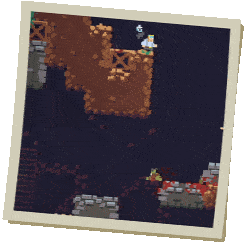
Unfortunately, I cannot praise the friendly AI the way I did with regular enemies. It always kills itself in the process of navigating the cave, doesn't use potions or other means to heal itself, and cannot heed commands given to it by the player. You cannot trade for items or talk to it, which is odd for a game that boasts allowing you to "make friends".
In earlier versions of the game other humans used to be hostile, something that would eliminate the need for a more complex system to interact with them. This feature was later removed. It is quite a shame; these explorers are able to equip and use the same weapons and artifacts you do, so I'd imagine they would prove to be formidable opponents. Instead, the game lets you to befriend them, through actions that are never really made clear or properly explained to the player.
Simply waiting around the AI will turn it friendly, as will killing enemies in its vicinity. Giving it items and affecting it with positive potions also seems to work. I wish this system was expanded upon further - being able to give them commands, set their attack modes, trade with them, or talk to them to discover things about the cave, learn about the game's lore, and perhaps about their specific motive for entering it.
The Old Man is another entity you cannot effectively interact with, and that seems to serve no real purpose. He's an NPC that has set up base at the hub and gives you a line of speech every time you respawn into it; he's the basis to some kind of storyline, although I am not entirely sure what the point of having him in the game is, other than I suppose taunting the player into playing better.
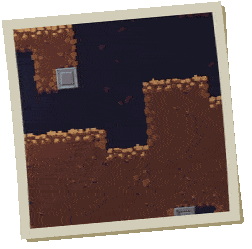
As you progress through the "story" the hub gets progressively more furnished and enables more gameplay options, like turning friendly companions off, starting Daily Runs, playing Arena (if you own the DLC), accessing statistics and other information about your playthroughs, and accessing unlocked Relics.
I really quite enjoy the hub, as it doubles as a playground for you to jump around the platforms and test the Perks you unlock. You can also customize your character next to the bonfire, which I feel would've been boring if shoved into some menu otherwise.
The meta-progression in this game has you filling up a global XP bar that grants you a Perk, a new Blessing, or a customization option each time you level up. The way the system is implemented into the game is satisfactory, however I am a bit disappointed that it doesn't dramatically change the appearance or functionality of your hub. Due to some Perks and Blessings simply not being worthwhile using, some of the unlocks become negligible. Getting new customization options is always nice, but those have no effect on gameplay otherwise.
Another small complaint I have about leveling up is that it's far too easy. I feel you unlock all the items and reach max level way before actually getting good enough to beat the game, meaning halfway through you've already reached max XP and have nothing exciting to unlock and look forward to.
The story in this game is really quite dreadful. Put into perspective, it's at a point where the dev added an entire in-game option (turned on by default) to turn the ending of the game off completely. Said story features the Old Man belittling you for returning to the caves like the other adventurers each time you die, until you reach and defeat the final boss - where the women trapped inside the dungeon are freed and move in with you permanently.

After they comfortably situate themselves in your hub, they promptly kill the Old Man (in his own home!) over a dispute; the story ends with them continuing to live on and party in this hub without as much as respectfully burying his body, leaving it to rot in the spot where he was murdered.
I'm not entirely sure which audience this is supposed to appeal to, but it certainly hasn't appealed to me. There are a few other things that haven't appealed to me, which I would like to discuss before wrapping this review up.
Shops are introduced into the game in the laziest way possible - shrines. You can pay some of your gold to get the one respective item and that's it. I feel like I'm missing some kind of barter system that would allow me to dump the items I collected throughout the run in favor of something I actually need. At the very least there should have been the occasional cash-in altar (much like the one in the Blackjack shops) that would give you other items, or money.
The inventory system is clunky. You cannot move items manually, and they don't autosort on their own. Important items, like bombs, food, runes and potions don't get added to your hotbar automatically, requiring you to play the game of "how fast can I open my inventory, navigate to the right slot with my movement keys, then assign a hotkey to the item I need", while the game is continuing to run in the background.
The game has this tendency to spawn chests and upgrades on platforms or inside crevices that are well out of the players' reach. When it does, it further fails to generate bombs to blow through said walls, or Ascension Orbs to help reach the items in question. This remains to be a problem after 6 years of game development, as well as numerous game updates.

Bosses in Caveblazers are all unique in appearance, creative in design, and have some interesting attacks and movesets to boot. However, my problem with them is that, ultimately, none of them (except for the final boss) feel as capable as the player in terms of mobility and damage output.
They're all big, slow monsters that take minimal damage for the majority of the fight, then have a brief moment of vulnerability which you must exploit in order to end the fight quicker. It's a system essentially built on waves, or phases, that has you jumping around doing nothing for the majority of your fight.
More bosses needed to be human (at least in part), like the final boss - combining the use of melee and ranged weaponry, making use of the parry system and shields, using healing and magic items, staying mobile and navigating the stage the way players do. Bosses should also be unique to each stage; currently all bosses appear across all floors, meaning if you learn their attack patterns you can almost reliably get to the endgame in each run you attempt.
The way you are able to approach situations thanks to the gear you carry and the way the AI reacts to it are really the sole reason to play the game. This isn't bad in and of itself, but if the combat doesn't appeal to you, not much else here will. The inventory system is clunky, the story is awful, the bosses suck and the meta-progression is weak.
It's a fun little sandbox that does many things right, but falls short on many others. I am aware that it may not fully appeal to other fans of this genre, mostly due to the numerous shortcomings listed in this review. However, I can still safely recommend it to other fans of this genre.